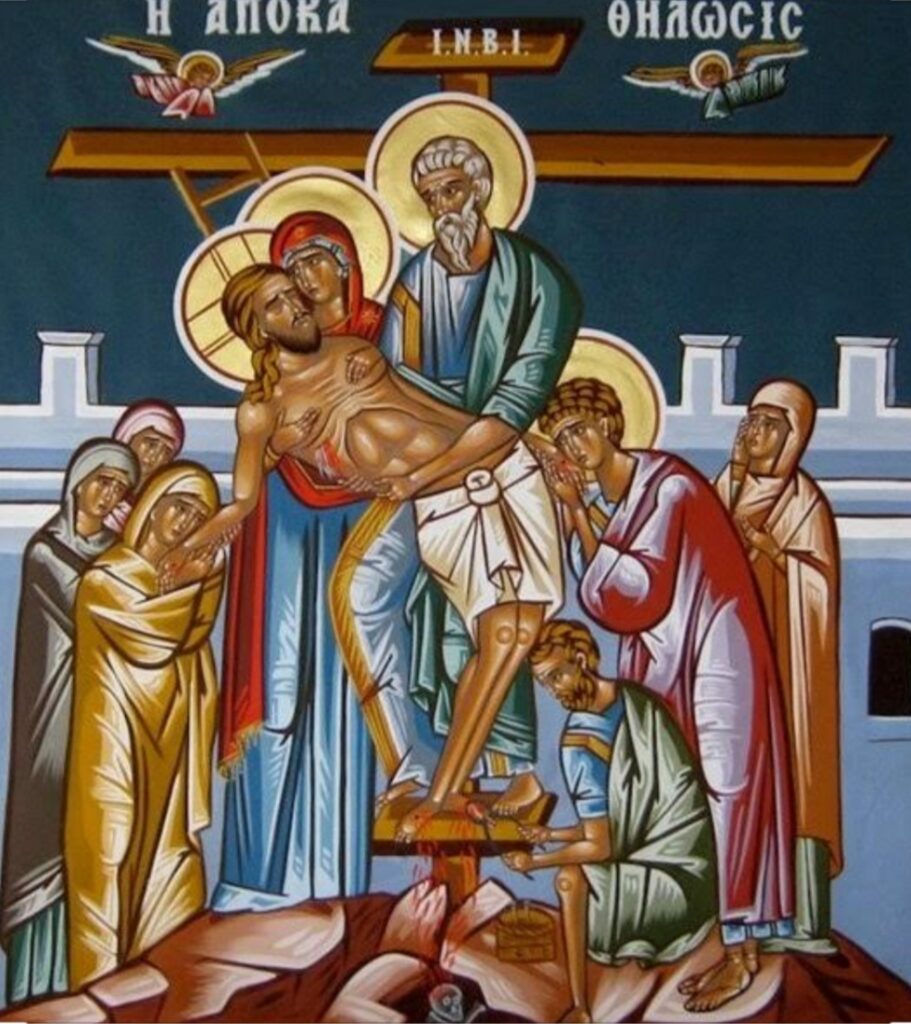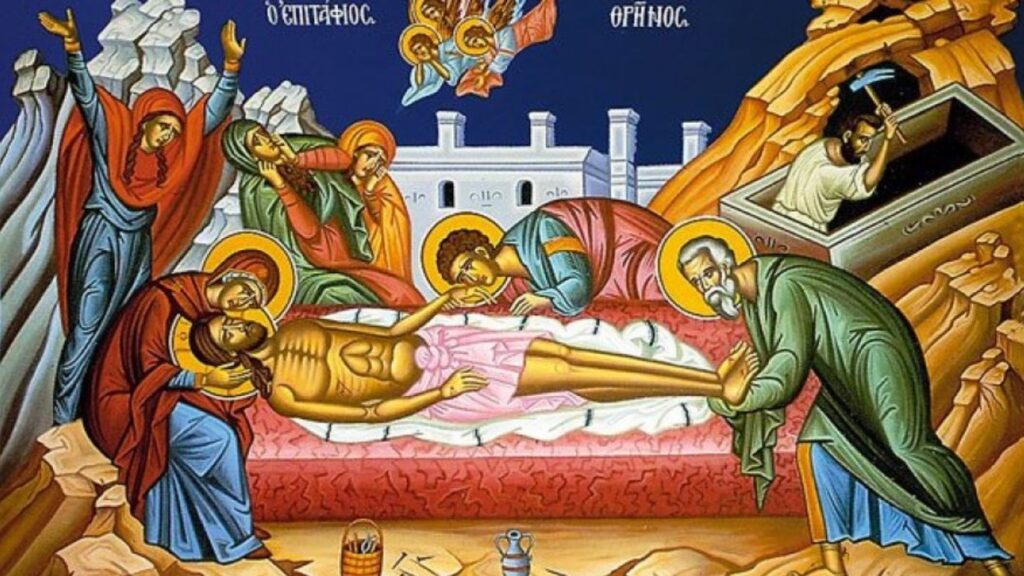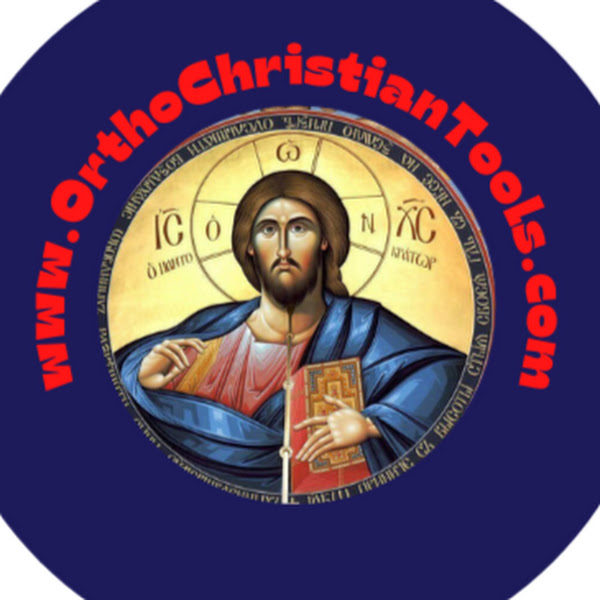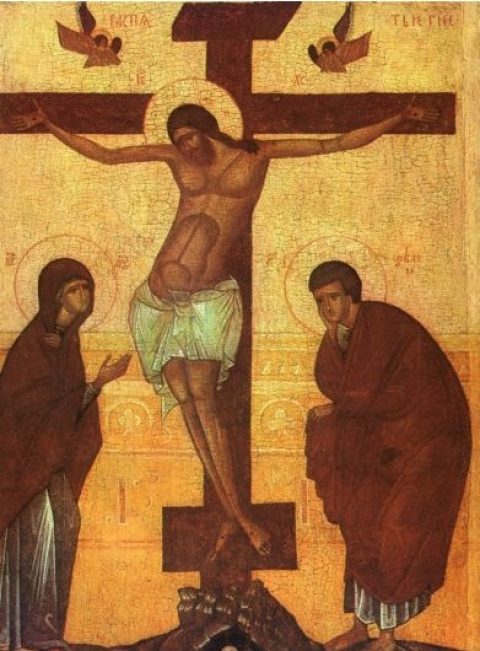Great and Holy Friday, also known as Good Friday in the Orthodox Christian tradition, is one of the most solemn and sacred days in the liturgical calendar. On this day, the Church commemorates the Passion and Crucifixion of Jesus Christ, reflecting deeply on His suffering and death on the Cross for the salvation of the world.
This day is the culmination of Holy Week, the final chapter in Christ’s earthly ministry. It is a time for prayer, fasting, mourning, and profound spiritual contemplation, as the faithful walk alongside Christ to Golgotha and witness the mystery of God’s ultimate love and sacrifice.
The Meaning of Great and Holy Friday
Great and Holy Friday marks the death of Christ on the Cross, the moment when sin and death met their defeat. Through His Passion, Christ willingly endured betrayal, mockery, scourging, and crucifixion—bearing the weight of the world’s sins and embracing death to destroy it from within.
On this day, the Church commemorates:
The betrayal of Christ
His unjust trial and condemnation
The mockery of the soldiers
The crown of thorns
His crucifixion at Golgotha
His final words: “It is finished” (John 19:30)
Despite the somberness of this day, it is not without hope. The Cross is not merely a symbol of suffering—it is the gateway to resurrection and eternal life. As Orthodox theology teaches, Christ died not because He had to, but because He chose to lay down His life for the salvation of humankind.
The Theology Behind the Cross
In Orthodox Christian belief, Christ is the New Adam, sinless and blameless. Where Adam’s disobedience brought death into the world, Christ’s obedience brings life. His death is not defeat but the victory of divine love. In His cry, “My God, my God, why have You forsaken Me?” (Mark 15:34), we glimpse the profound mystery of the God-man entering fully into human suffering—even alienation and death.
Yet, His final words, “It is finished,” signal not despair, but triumph. Christ’s mission is complete; death has been swallowed up in life. This paradox—that death becomes the path to life—is central to the Orthodox understanding of salvation.
The Liturgical Observance of Great and Holy Friday
1. Matins of Holy Friday (Celebrated Thursday Evening)
The services begin with the Matins of Holy Friday, often called the Service of the Twelve Gospels. During this emotionally moving service, twelve Gospel readings narrate the Passion story—from the Last Supper to Christ’s burial (John 13:31–18:1, Matthew 27:62–66, and others).
At the heart of this service is the chanting of the 15th Antiphon, a poetic and powerful hymn that depicts the suffering of Christ in rich imagery:
“Today He who hung the earth upon the waters is hung upon the Cross… We venerate Thy Passion, O Christ. Show us also Thy glorious Resurrection.”
A solemn procession follows, during which a large wooden crucifix is carried around the church. The faithful kneel and venerate the Cross, remembering the repentance of the Good Thief and offering prayers of contrition and thanksgiving.
2. Royal Hours (Friday Morning)
The morning of Great Friday is marked by the Royal Hours, a series of prayers, hymns, Psalms, and Scripture readings drawn from the Old Testament, the Epistles, and the Gospels. These readings place Christ’s death within the larger story of salvation history, showing how prophecy is fulfilled in Him.
Scriptures include:
Zechariah 11:10–13
Isaiah 50:4–11
Hebrews 2:11–18
Matthew 27:1–56, among others.
3. Vespers of the Unnailing (Friday Afternoon)
One of the most poignant moments in the Orthodox calendar takes place during the Vespers of Great Friday, also known as the Unnailing Service. As the Gospel account of Christ’s removal from the Cross is read, the priest reverently removes the icon of Christ from the crucifix, wraps it in a white cloth, and places it on the Holy Altar.
The Epitaphios—an embroidered icon of the dead Christ—is then carried in a funeral procession and placed in a symbolic tomb in the center of the church. This act signifies both sorrow and hope: Christ is truly dead, yet He descends into Hades to defeat death and bring salvation to the righteous of all ages.

Iconography of Great and Holy Friday
Iconography plays a crucial role in Orthodox Holy Week worship. On Great Friday, several key icons are venerated:
1. The Crucifixion Icon
Christ is shown nailed to the Cross, His side pierced.
At His feet lies a skull—symbolizing Adam’s grave.
Nearby stand the Theotokos, St. John, and other mourners.
2. Extreme Humility (Axra Tapeinosis)
Depicts the dead body of Christ in the tomb.
A profound image of the Incarnation’s ultimate humility.
3. Epitaphios Icon
Shows Christ’s body being prepared for burial.
Surrounded by the Theotokos, St. John, Joseph of Arimathea, and Mary Magdalene.

A Day of Mourning and Transformation
Great and Holy Friday is one of the only two days in the Orthodox calendar when the Divine Liturgy is not celebrated—a powerful liturgical silence marking the absence of Christ. Yet even in this stillness, God is at work. As one hymn declares:
“Come, let us see our Life lying in the tomb, that He may give life to those who lie dead in their tombs.”
Even in death, Christ is bringing life. Even in the grave, He is conquering Hades.
Hymns and Prayers for Great and Holy Friday
15th Antiphon of Matins
“Today He who hung the earth upon the waters is hung upon the Cross… We venerate Thy Passion, O Christ. Show us also Thy glorious Resurrection.”
Exapostelarion
“On the same day, O Lord, You granted the Robber Paradise. Now by the wood of the Cross, illumine me and save me.”
Conclusion: The Cross as the Doorway to Resurrection
Great and Holy Friday invites us to stand before the Cross not merely as mourners, but as witnesses to divine love. It is a day of paradox—of darkness overcome by light, of death swallowed by life.
As Orthodox Christians prepare to enter into the mystery of Christ’s Resurrection, they first descend into the depths of His Passion. By venerating His Cross, mourning His death, and watching at His tomb, they prepare their hearts for the joy of Pascha, the Feast of Feasts.

